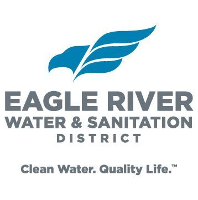State Chamber says Oklahoma’s poor literacy rates threaten workforce growth – News On 6

Report on Oklahoma’s Educational Deficiencies and Their Impact on Sustainable Development Goals
Executive Summary
A report from the Oklahoma State Chamber indicates that the state’s low rankings in primary and secondary education are creating significant long-term barriers to achieving key Sustainable Development Goals (SDGs), particularly SDG 4 (Quality Education) and SDG 8 (Decent Work and Economic Growth). Business leaders identify the lack of a skilled workforce as the primary threat to economic progress, a challenge rooted in foundational literacy and numeracy deficits within the education system.
Analysis of Educational Shortfalls in Relation to SDG 4: Quality Education
Oklahoma’s current educational performance is misaligned with the objectives of SDG 4, which aims to ensure inclusive and equitable quality education for all. The state’s low national rankings highlight a critical failure to provide foundational skills necessary for lifelong learning and economic participation.
- Target 4.1 (Universal Primary and Secondary Education): The state ranks 49th in 3rd-grade reading scores, indicating a failure to ensure children acquire fundamental literacy skills during primary education.
- Target 4.1 (Universal Primary and Secondary Education): Oklahoma ranks 50th in 8th-grade math scores, demonstrating a significant gap in achieving proficiency in numeracy by the end of lower secondary education.
- Target 4.4 (Skills for Decent Work): Chad Warmington, President of the State Chamber, noted that many students entering vocational training programs, such as aviation mechanics and diesel technology, lack the basic literacy skills required to read technical manuals. This directly impedes the acquisition of technical and vocational skills for employment.
Impact on SDG 8: Decent Work and Economic Growth
The educational crisis presents a direct impediment to achieving SDG 8, which promotes sustained, inclusive, and sustainable economic growth, full and productive employment, and decent work for all. The business community has voiced major concerns about the long-term viability of the state’s economy without a competent workforce.
Key Economic Challenges:
- Workforce Quality: A survey of business leaders identified the lack of a quality workforce as the single greatest threat to their operations and to the state’s overall economic growth.
- Productivity and Employability: A significant portion of job candidates struggle with basic comprehension and instructions, limiting their ability to contribute effectively and secure decent employment.
- Economic Diversification: The inability to supply skilled labor for technical fields undermines efforts to grow and diversify Oklahoma’s economy, limiting progress toward sustainable economic development.
Strategic Response and Alignment with SDG 17: Partnerships for the Goals
In response to this crisis, a multi-stakeholder partnership is forming, reflecting the principles of SDG 17. The “Oklahoma Competes” initiative, promoted by the State Chamber, aims to foster collaboration between the private sector, government, and educational institutions to prioritize literacy improvement.
Collaborative Actions:
- Private Sector Leadership: The Oklahoma State Chamber is spearheading the initiative to advocate for policy changes.
- Government and Education Partnership: Recent meetings between the Chamber and Interim State Superintendent Lindel Fields signal a shared commitment to raising literacy rates.
- Policy Development: A new literacy plan is anticipated for introduction during the upcoming legislative session, demonstrating a coordinated effort to create and implement effective educational policies.
By modeling its approach on states like Mississippi, which have seen significant literacy gains, Oklahoma aims to create a focused, collaborative strategy to ensure that quality education becomes a cornerstone for achieving sustainable economic growth and decent work for all its citizens.
1. Which SDGs are addressed or connected to the issues highlighted in the article?
SDG 4: Quality Education
- The article directly addresses the quality of education in Oklahoma, highlighting the state’s low rankings in reading and math. It emphasizes the need for “literacy improvement” and “getting kids literate in elementary school,” which is a core component of quality education.
SDG 8: Decent Work and Economic Growth
- The article links the state’s educational shortcomings to economic challenges. The Oklahoma State Chamber’s President states that the “number one threat to their business is the lack of quality workforce” and that the state cannot “grow our economy” without improving literacy. This connects the quality of the workforce directly to the potential for economic growth.
2. What specific targets under those SDGs can be identified based on the article’s content?
-
SDG Target 4.1: By 2030, ensure that all girls and boys complete free, equitable and quality primary and secondary education leading to relevant and effective learning outcomes.
- The article’s focus on Oklahoma’s low rankings in “3rd-grade reading scores” and “8th-grade math scores” directly relates to measuring learning outcomes in primary and lower secondary education. The call to get “kids literate in elementary school” is a direct effort to achieve this target.
-
SDG Target 4.4: By 2030, substantially increase the number of youth and adults who have relevant skills, including technical and vocational skills, for employment, decent jobs and entrepreneurship.
- The article highlights a skills gap where students wanting to take CareerTech classes in fields like “aviation mechanics, diesel technology, and HVAC training” lack the basic literacy skills required. This points to the need for foundational skills that enable the acquisition of technical and vocational training for employment.
-
SDG Target 8.6: By 2020, substantially reduce the proportion of youth not in employment, education or training.
- Although the 2020 deadline has passed, the principle remains relevant. The article implies that a lack of basic literacy prevents individuals from successfully entering vocational training (“CareerTech class”) or the workforce. This creates a barrier, contributing to a population that may struggle to find employment or access further education and training. The “lack of quality workforce” suggests that many job candidates are not equipped for available jobs.
3. Are there any indicators mentioned or implied in the article that can be used to measure progress towards the identified targets?
-
Indicator 4.1.1: Proportion of children and young people (a) in grades 2/3; (b) at the end of primary; and (c) at the end of lower secondary achieving at least a minimum proficiency level in (i) reading and (ii) mathematics.
- The article explicitly mentions two data points that serve as direct measures for this indicator: Oklahoma’s rank as “50th in 8th-grade math scores” and “49th in 3rd-grade reading scores.” These statistics are used to quantify the state’s educational challenges.
-
Implied Indicator: Workforce Skills Gap
- The article implies the existence of a skills gap, which can be measured. The statement that “many job candidates struggle to read or understand basic instructions” and that students “literally don’t have the literacy skills to read the manual” for vocational training serves as a qualitative indicator. This could be quantified through employer surveys or assessments of job candidates’ foundational skills.
-
Implied Indicator: Business Confidence/Barriers to Growth
- The article mentions a “survey of business leaders” where they identified the “lack of quality workforce” as the “number one threat to their business.” This survey result acts as an indicator of how educational outcomes are impacting economic growth and business operations.
4. SDGs, Targets, and Indicators Table
| SDGs | Targets | Indicators |
|---|---|---|
| SDG 4: Quality Education | Target 4.1: Ensure all children complete free, equitable and quality primary and secondary education. | State rankings in “3rd-grade reading scores” and “8th-grade math scores” (Directly mentioned). |
| SDG 4: Quality Education | Target 4.4: Increase the number of youth and adults with relevant skills for employment. | Inability of students to read manuals for CareerTech classes (Implied skills gap). |
| SDG 8: Decent Work and Economic Growth | Target 8.6: Reduce the proportion of youth not in employment, education or training. | Job candidates struggling with basic literacy skills, preventing them from entering the workforce or training (Implied). |
| SDG 8: Decent Work and Economic Growth | (Related to overall goal) Achieve higher levels of economic productivity through a skilled workforce. | Survey results identifying “lack of quality workforce” as the “number one threat” to business (Implied). |
Source: newson6.com
What is Your Reaction?
 Like
0
Like
0
 Dislike
0
Dislike
0
 Love
0
Love
0
 Funny
0
Funny
0
 Angry
0
Angry
0
 Sad
0
Sad
0
 Wow
0
Wow
0




















































.jpg.webp?itok=0ZsAnae9#)
























